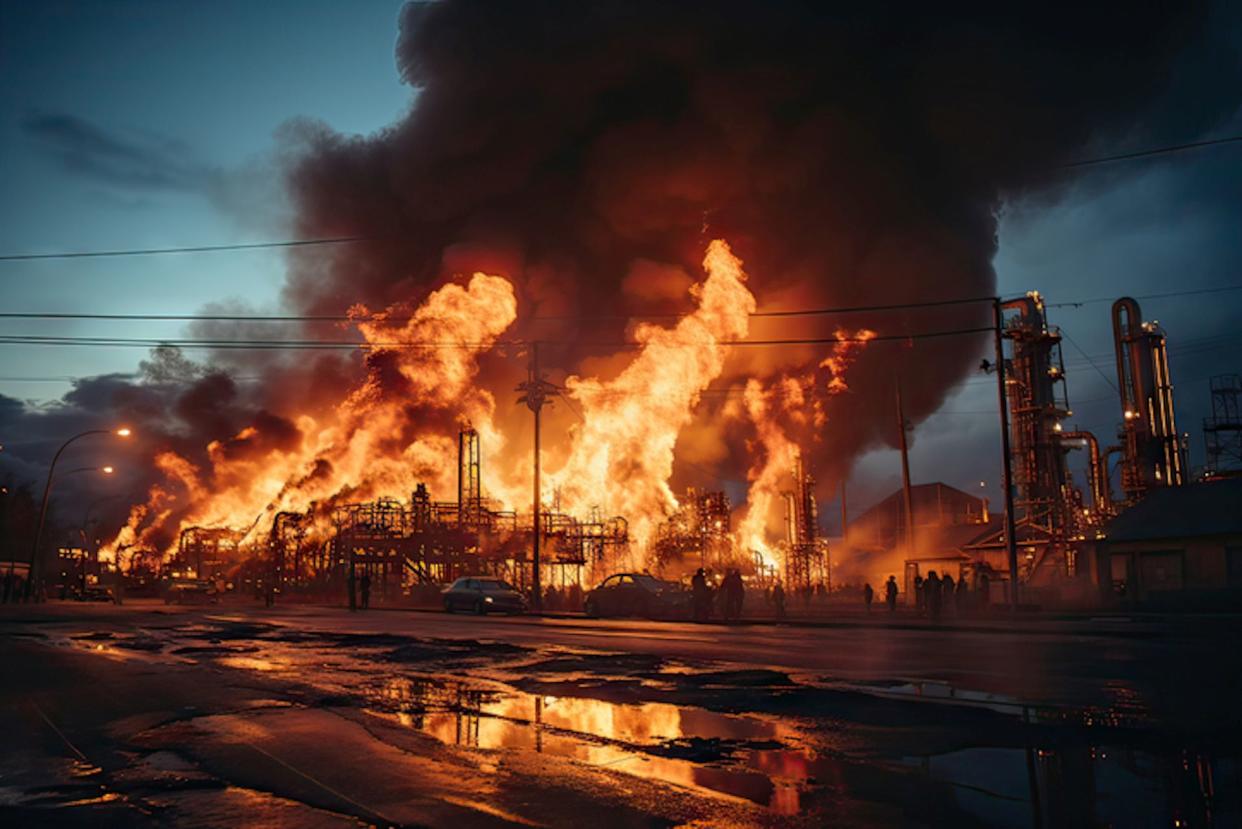Residents worried they don’t have whole picture about health impacts following two-day oil refinery fire: ‘The sky is black’

Oil, gas, and coal are well-known sources of air pollution, even when used as intended to power cars, appliances, and generators. Industrial accidents with these materials can worsen the problem by releasing huge amounts of toxins into the air.
That’s what residents are concerned about after a fire at a Louisiana oil refinery unleashed a massive column of smoke into the air in August, AP News reports.
What happened?
The Marathon Petroleum refinery in Garyville, La., sits on the bank of the Mississippi River, as AP News explains. On Friday, Aug. 25, a fire broke out at the facility. It torched two tanks of naphtha, which is used to make gasoline and jet fuel.
Photos of the fire showed a massive plume of thick, black smoke that overshadowed entire buildings as firefighters struggled to put out the blaze. The fire lasted for two days.
Hilary Cambre, a Garyville resident who lives near the refinery, witnessed the event. “You look outside your house and the sky is black,” he told WWL-TV. He and other neighbors complained of nausea, dizziness, and headaches.
According to Marathon Petroleum, two people were injured in the fire, and ten were evaluated for heat stress, AP News reports.
Dr. Rustin Reed of Tulane University’s School of Public Health and Tropical Medicine told WWL-TV that anyone with respiratory issues who lived nearby should avoid going outside.
Why is the oil refinery fire a problem?
Although early tests by the state and a third-party contractor indicated only “non-detectable air quality impacts,” residents worried that wasn’t the whole picture, AP News reports. They were right to be concerned; even ordinary wildfire smoke is hazardous, and burning industrial chemicals are potentially even more dangerous.
All that smoke also contributed to the heat-trapping gases raising Earth’s temperature. Accidents like this one increase the burden of air pollution on our environment.
What was done to protect residents?
During the fire, a 2-mile radius around the site was evacuated to protect residents from the fumes, AP News reports. Some schools in the area were locked down for safety, while two others were set up as evacuation centers.
Join our free newsletter for weekly updates on the coolest innovations improving our lives and saving our planet.


